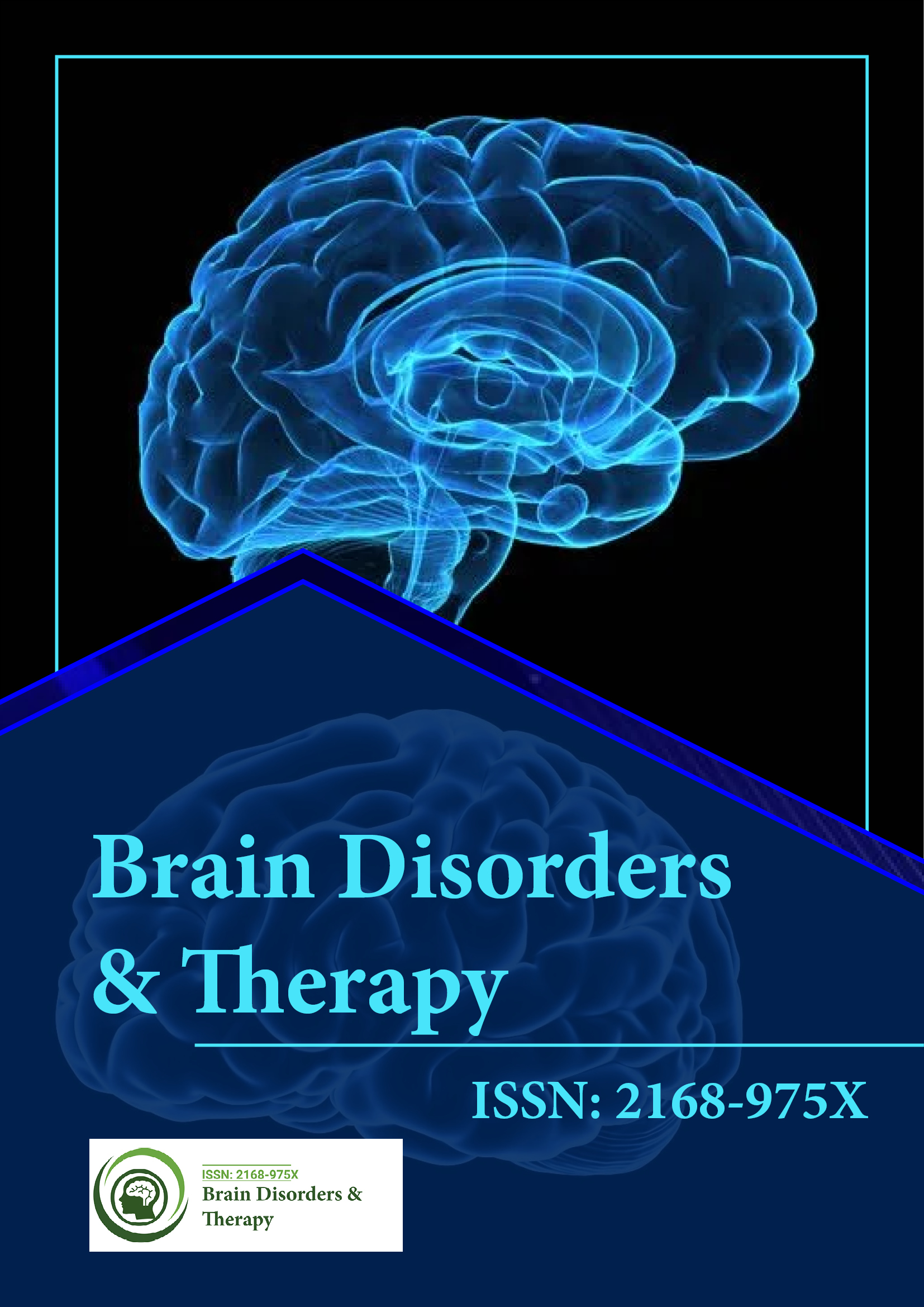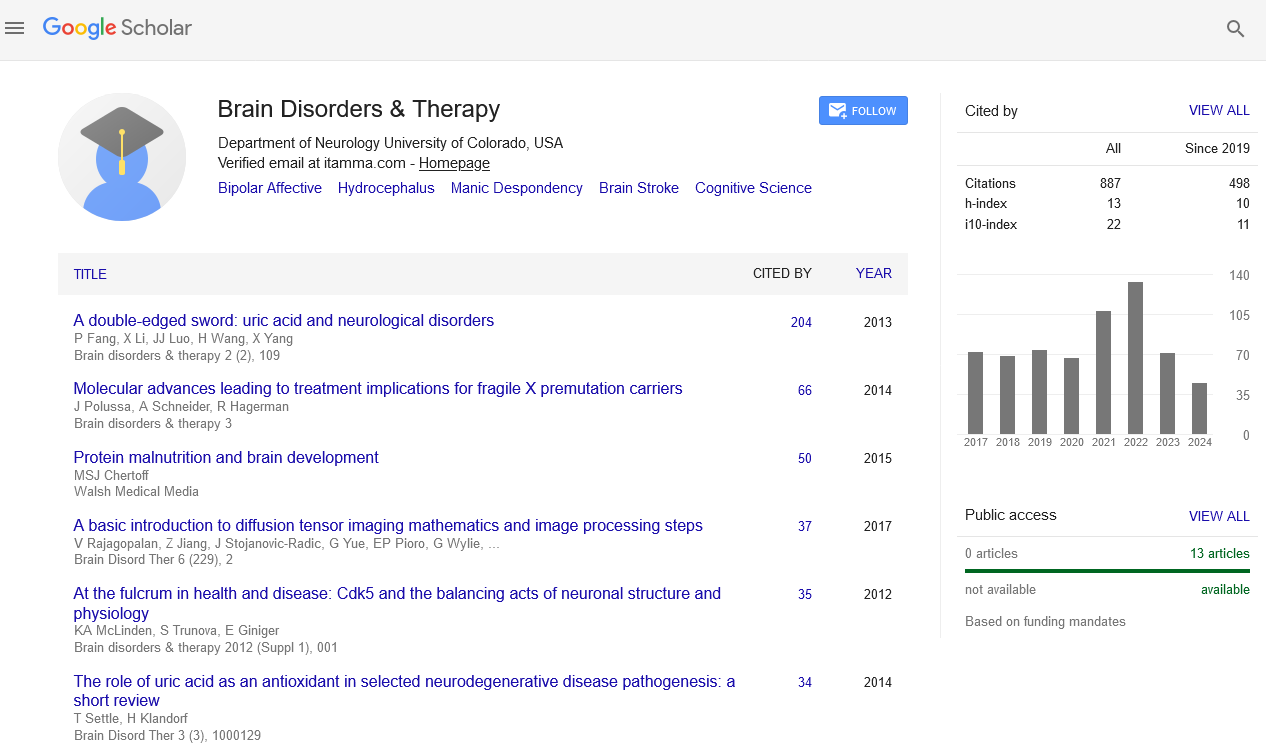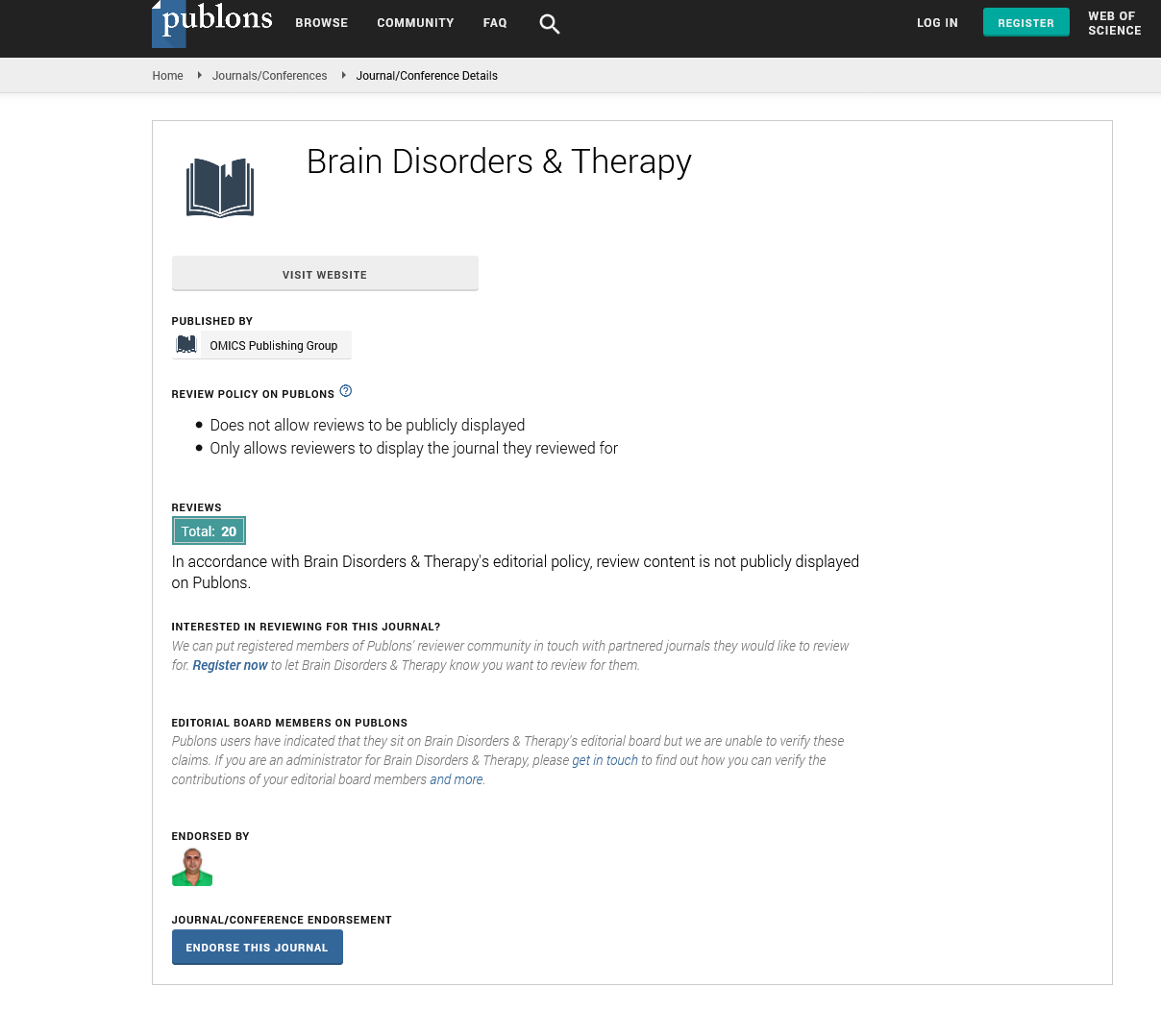Indexed In
- Open J Gate
- Genamics JournalSeek
- JournalTOCs
- RefSeek
- Hamdard University
- EBSCO A-Z
- OCLC- WorldCat
- Publons
- Geneva Foundation for Medical Education and Research
Useful Links
Share This Page
Journal Flyer

Open Access Journals
- Agri and Aquaculture
- Biochemistry
- Bioinformatics & Systems Biology
- Business & Management
- Chemistry
- Clinical Sciences
- Engineering
- Food & Nutrition
- General Science
- Genetics & Molecular Biology
- Immunology & Microbiology
- Medical Sciences
- Neuroscience & Psychology
- Nursing & Health Care
- Pharmaceutical Sciences
Use of the novel optokinetic chart stimulation based OKCSIB protocol for upper limb recovery in dense acute strokes: Insights for future research from a case control series
Global Summit on Stroke
August 03-05, 2015 Birmingham, UK
Benjamin Chitambira
Scientific Tracks Abstracts: Brain Disord Ther
Abstract:
Background: This presentation aims to report on the use of optokinetic chart stimulation based OKCSIB protocol for upper
limb recovery in dense acute strokes as well as discuss insights for future research.
Methods: The optokinetic chart is made of laminated A4 paper. It consists of repeated bundles of the colors of the rainbow. The
chart is placed 20 centimeters in front of a patient’s face. It is moved from side to side at approximately one cycle per second
for 3 minutes. This is followed by moving the chart up and down for 3 minutes and then forwards and backwards for another
3 minutes. The affected paralyzed hand was also used for aiding balance by holding on during sensory interaction for balance
for 3 minutes. This was then followed by 5 repetitions each for specific active-assisted anti-gravity extensor exercises of the
upper limb.
Results: Dense acute strokes treated by the OKCSIB protocol had statistically significant upper limb recovery when compared
to those treated by conventional neurophysiotherapy (P<0.05). The OKCSIB protocol also led to statistically significant
prevention of affected hand spasticity (p<0.05).
Conclusion: Optokinetic chart stimulation shows promise as a novel recovery focused upper limb rehabilitation intervention.
The key to these results may be in the restoration of anti-gravity extensor tone by cortico-vestibulospinal descending motor
output to the affected upper limb. Further research with fully powered randomized controlled trials is required to provide
evidence for its inclusion in future guidelines.
Biography :
Benjamin Chitambira has completed his BSc Physiotherapy Honours degree from the University of Zimbabwe in 1995. He also completed a Postgraduate Certificate
in Healthcare Leadership from the Open University in the UK in 2014. With over 19 years experience as a neurophysiotherapist, he has been carrying out research
on Optokinetic Chart Stimulation as a Clinical Specialist Physiotherapist in the Richard Stevens Stroke Unit for over 8 years. With over 9 papers published in peer
reviewed journals, he has been a Peer Reviewer for reputable journals and now serves as an Editorial Board Member of peer reviewed journals.


